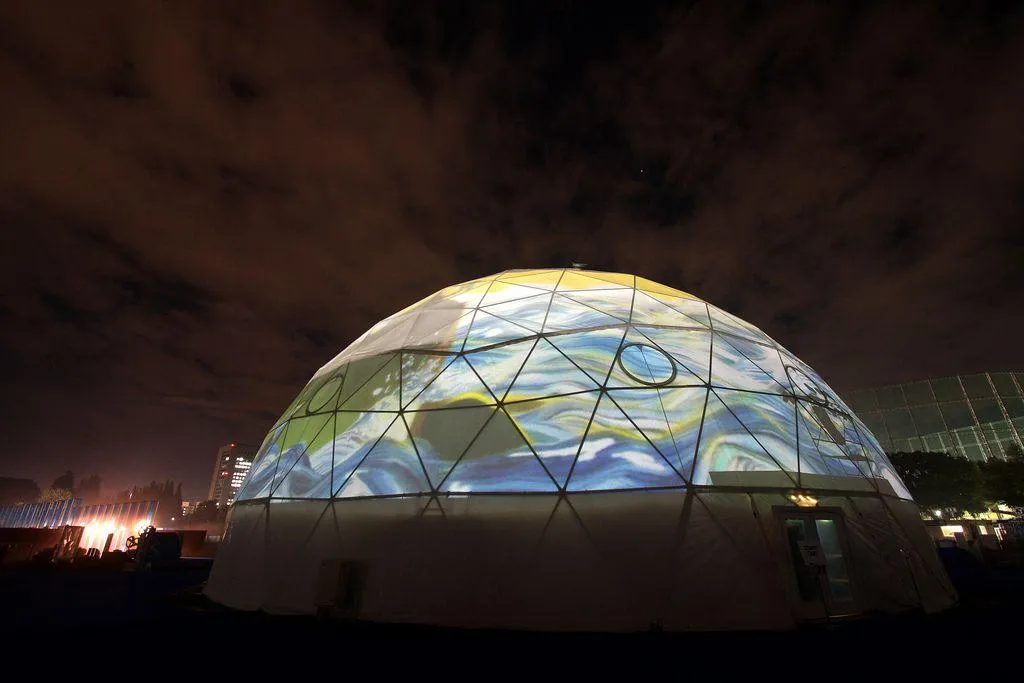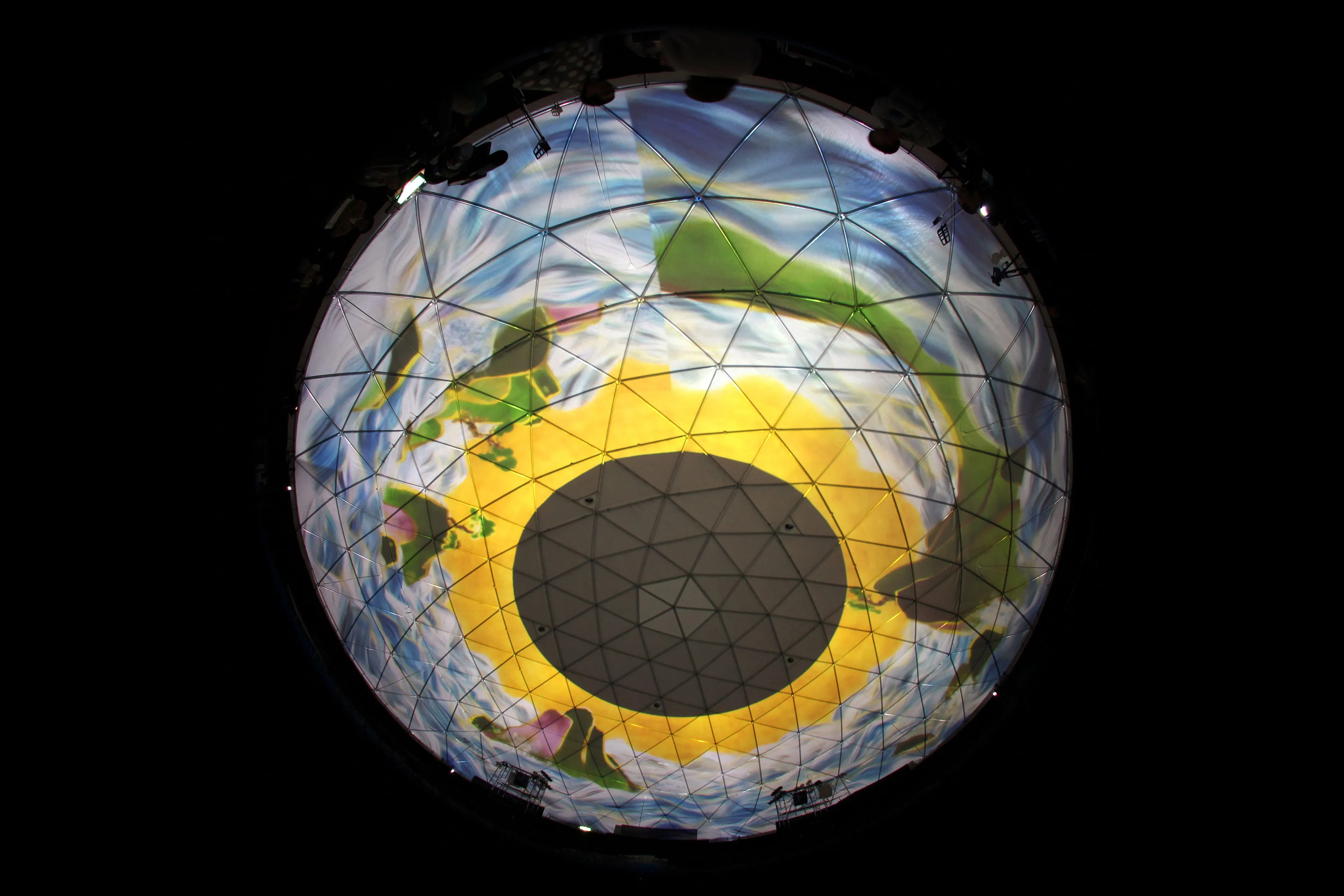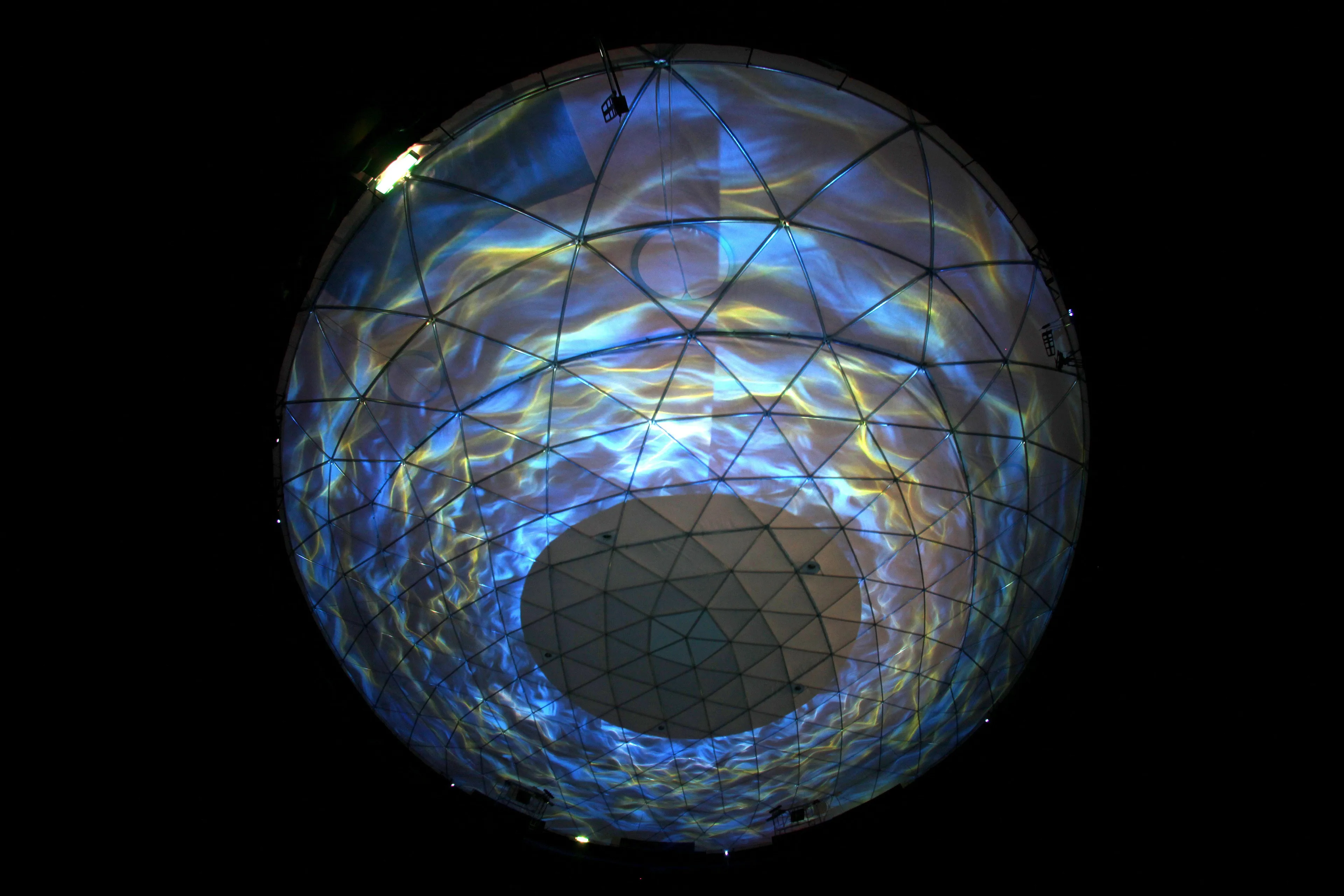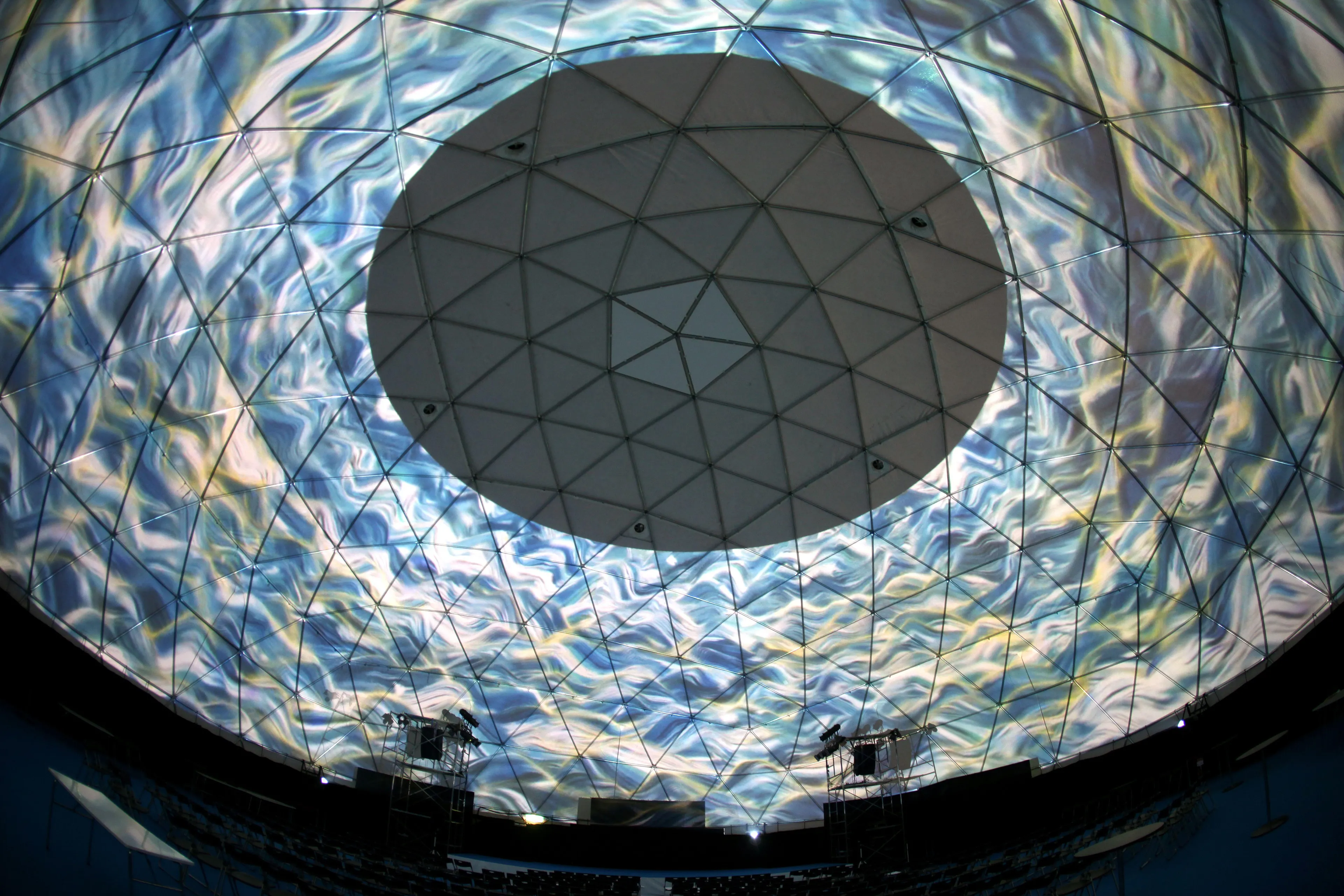100 Years Sea Animation Diorama - Dome Version
teamLab, 2009, Installation, 10 min 00 s (Φ30m)
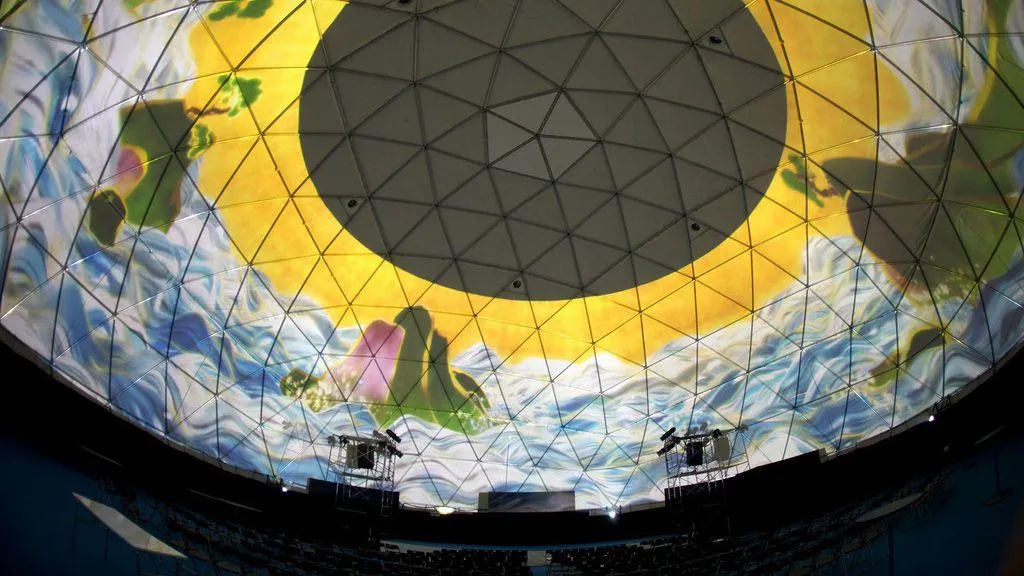

100 Years Sea Animation Diorama - Dome Version
teamLab, 2009, Installation, 10 min 00 s (Φ30m)
This installation is a 10 minute, condensed version of 100 Years Sea. The installation gives viewers the feeling that there is no border between the animated world and the real world, and the rising sea that eventually swallows them.
Historically, Japanese artists painted waves using a combination of lines. These assembled lines give the impression of the life and energy of the sea as one living entity. Looking at the sea we feel awe, and it is likely due to this awe that Japanese artists chose to express the sea in this manner. Japanese ancestors possibly saw the world as it is depicted in classic Japanese imagery. Based on this idea, teamLab considered recombining the subjective view of ancient times with the fixed objective view of the modern world. The waves were created in a virtual 3-D space, and then converted into what teamLab calls ultrasubjective space. Instead of viewing the work objectively, we may be able to discover a new form of expression in which viewers feel there is no border between the world of the artwork and the world in which they exist. As a result, the viewers may be able to feel the work more physically.
Historically, Japanese artists painted waves using a combination of lines. These assembled lines give the impression of the life and energy of the sea as one living entity. Looking at the sea we feel awe, and it is likely due to this awe that Japanese artists chose to express the sea in this manner. Japanese ancestors possibly saw the world as it is depicted in classic Japanese imagery. Based on this idea, teamLab considered recombining the subjective view of ancient times with the fixed objective view of the modern world. The waves were created in a virtual 3-D space, and then converted into what teamLab calls ultrasubjective space. Instead of viewing the work objectively, we may be able to discover a new form of expression in which viewers feel there is no border between the world of the artwork and the world in which they exist. As a result, the viewers may be able to feel the work more physically.
